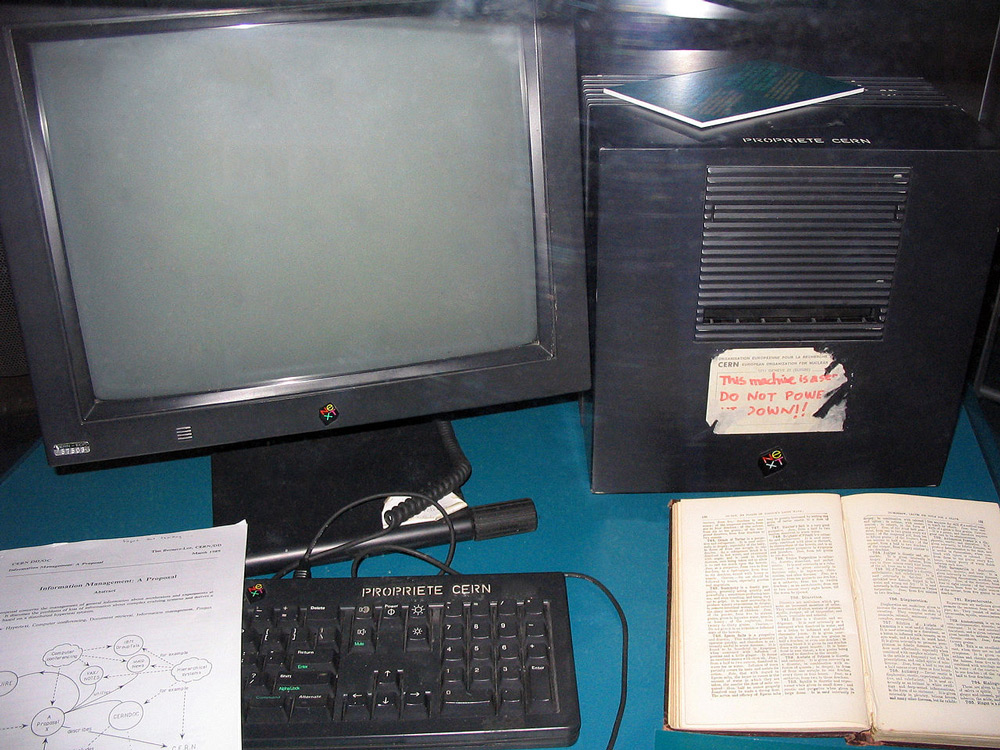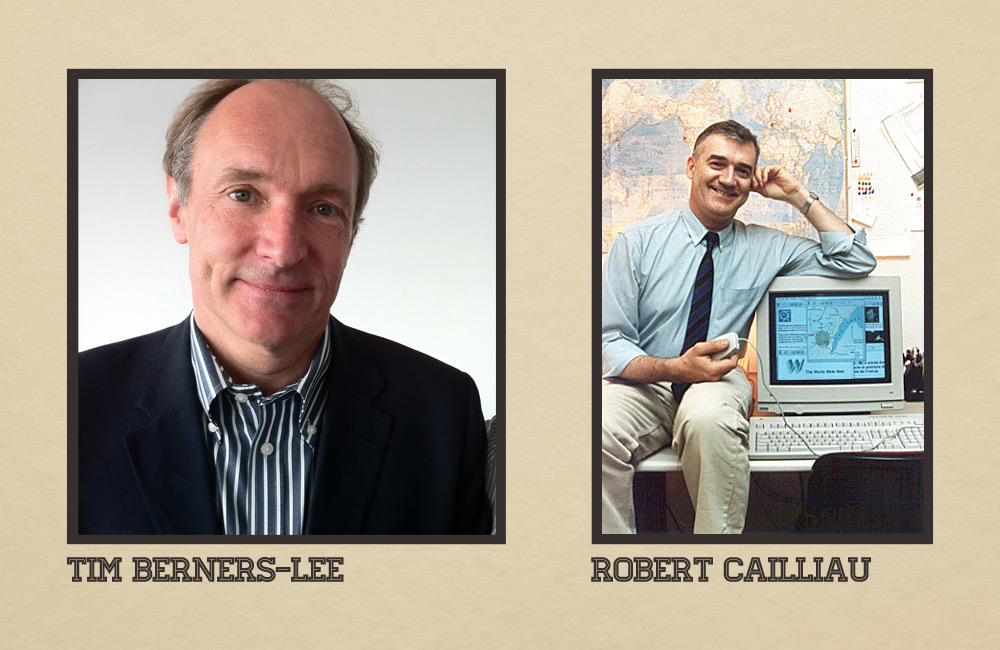The Man Who Invented the Web
While Tim Berners-Lee was working for the scientific research organisation, CERN, in Geneva, he saw the need for an easier and quicker way to access digital information with any computer and from any place in the world. At that time in the 1980s, digital collaboration at CERN was generally difficult and a new system needed to be developed.
As a side project, Tim created a computer program called Enquire which would store random associations about different things. The program proved useful for a few people in the company, but he wanted a place where everyone could collaborate. He knew he needed to create a system which everyone could use to find and share information. This would enable all the people working on a project to design something together and collaborate in a single space, though geographically separated.
Nine years later in 1989, Tim made a proposal to his boss Mike Sendall for an information management system. This ‘web’ of information would be an answer to CERN’s problem of information loss. The system would link together large amounts of stored information making it easy to find.
In September of the following year, Mike Sendall gave his permission for Tim to purchase a NeXT cube computer which he would use to develop the new system. Tim finally settled on a name for the project, ‘World Wide Web’, and with the help of Robert Cailliau, he developed the technology enough to be demonstrated by Christmas of 1990.
World’s first web server: Tim Berners-Lee used this NeXT cube computer to serve the first website. (Image Wikimedia)
Sir Tim had the right approach for filling the information gap. Rather than ‘reinventing the wheel’, he used technology that had already been developed by many other people and simply linked them together to create the best possible technology for filling that gap.The World Wide Web was now a reality, because Tim Berners-Lee had seen a large communication gap that needed to be filled, looked at the different technologies which were already available, and saw a way to make them work together to fill the gap. Perhaps unknowingly, he had created the most important information sharing technology for both businesses and individuals all over the world. Tim has been called the father of the World Wide Web. In 2003 he received the Knight Commander of the Order of the British Empire from Queen Elizabeth II for his pioneering work.
Business movers should take the same approach as Sir Tim. The Web was invented for the practical reason of aiding communication and information sharing. Sir Tim developed the Web to aid collaboration within CERN, and when businesses realise this primary purpose for the Web, they can utilise it in the best way to improve work efficiency and market reach. Businesses should have a clear idea of why they need the Web and the best way to take advantage of it.
Sir Tim Berners-Lee and Robert Cailliau both worked to develop the web (Image credits Wikimedia and CERN)



